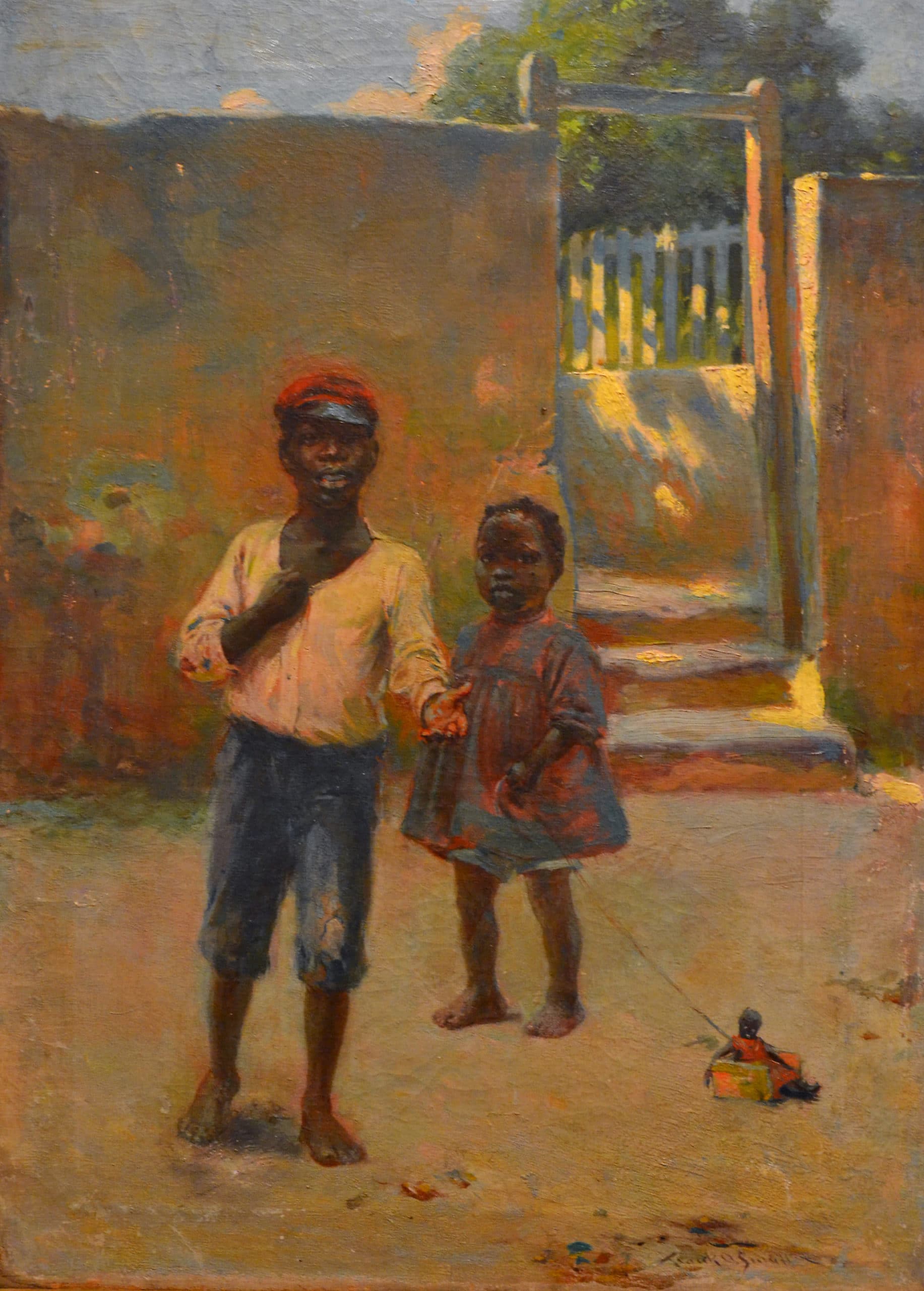
By Natalie Willis
We have a long history of looking in The Bahamas, in the idea of being seen. We were the chain of limestone that 40,000 Lucayans and Arawaks saw as home as they weaved their way north through the islands. We were Christopher Columbus’ misplaced Indies, setting his eyes on a lucky second-best that he claimed for Spain – thus beginning the “New World” and our written history. There were the hungry eyes set on plantation profit – and the hungry eyes of those forced to do that work. Then there were the thousands of eyes afterwards, in and out of the space in blinks and in boats that came to see just what “paradise” looked like. Those eyes were turned on us.
Hundreds of painters came through The Bahamas and the Caribbean from the 1850s into the 1950s to see the space as it was reimagined – from West Indies hell-hole of disease to tropical Eden to cure-all-ills. One such painter was Frank Otis Small. An American, born in 1860 and died in 1915, Small’s work is a clear example of the way that colonial eyes looked at Bahamians of this era. Many of these artists have left little of extensive detail for us to remember them by, but their art speaks volumes about their character and their time.
Small’s attention to light is exemplary of how visitors continue to view the Caribbean space today. For those of us living here year-round, day in, day out, regardless of your situation or circumstance the light has always had a near-magical way of changing through the day and each season. This light filters in behind two children, barefoot, who seem to look back with the same inquisitiveness that Small might have had himself. A young boy reaches his hand forward – to greet or to ask for assistance, we can’t quite discern. An even younger girl stands behind–a toddler–with a small doll on a cart with a string – a small detail with a big history.
The first dolls in society go back as far as 21st Century BC. But Black dolls in modern history have a sad but beautiful story. Not unlike the doll we see in Small’s work, dolls for Black children from the 1800s through to the early 1900s were made with love, care, and resourcefulness. A recent exhibition in Paris showcases the Deborah Neff collection, a series of hand-made dolls made to represent Black children. Slaves would craft dolls as they knew best from West African traditions, and later on, those descended from them would carry on some of these traditions, albeit with a less grounded understanding of where they came from. Displacement and uprootedness for generations rounds off the sharpness articulation in your mother tongues, but even the slurred sentiments, later on, can still have meaning even when they feel a little lost, much like these dolls.
Made from socks, wood, straw – as we know well here – these dolls are all individuals, no Barbies could compare to the time and tenderness and care that went into the representation they present. Small may have taken great time in rendering this image, appealing to the eye as it is, but I have a feeling that the doll within it – whether made with great skill or otherwise – could pull at the heartstrings in a way his interpretations and observations of the time could never quite fully encapsulate. Producing a positive image of what you and those around you look like in that time was a quietly radical political act – in a time when Blackness was to be utilised and silenced, daring to produce versions of your people for younger generations is an act of the utmost care and defiance.
